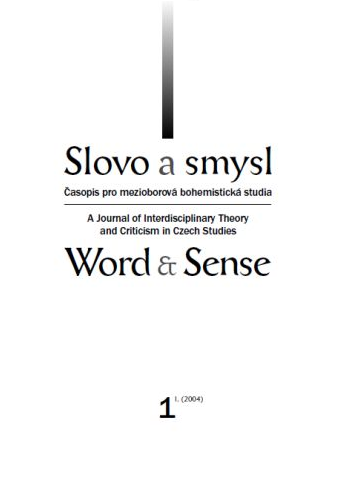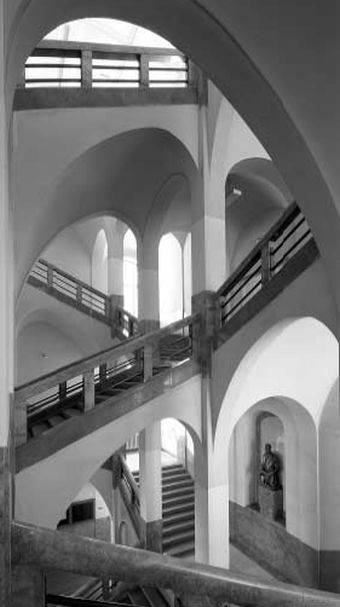Karel Hlaváček and the Idea of Decadence
Art historian Otto Urban, coeditor of the ground-breaking anthology The Modern Review 1894–1925 (1995), has outdone himself in this critical biography focusing on the art and criticism of the decadent poet and artist Karel Hlaváček (1874–1898), one of the most talented and fascinating cultural figures of the 1890s. This monograph is the first to appear since Fedor Soldan’s Marxist-oriented 1930 study, which highlights Hlaváček’s literary works. Urban, on the other hand, seeks to establish Hlaváček’s reputation as a significant and influential artist. In addition to his own cultural-historical scholarship based on primary sources, Urban also brings together and annotates important primary texts – Hlaváček’s critical writings on art, the Sokol organization, and other cultural and social issues, which account for the last third of the book. This volume is indispensable for anyone interested in modernist art or fin-de-siecle culture in Bohemia.
The reader is struck immediately by this large volume’s appearance: it contains 267 photographs, illustrations and art reproductions, most of which are in color. In general, Hlaváček’s artwork is arranged chronologically, and one gets a sense of the artist’s evolution as one leafs through the pages. However, this is more than a book for the coffee table; its seven chapters devoted to the decadent’s life, art, and reception are full of new material and insights supported by archival research and citations of Hlaváček and other contributors to The Modern Review. The first chapter describes Hlaváček’s cultural context; the second, his youth in the working-class Prague neighborhood of Libeň; the third and fourth, his collaboration with The Modern Review and other journals; the fifth and sixth, his mature art; and the last, his death. The author extensively integrates secondary literature not only on the Czech context, but also on decadence as an international trend encompassing all of the arts. The bibliography includes both an exhaustive list of Czech sources and a thorough survey of the most important studies in English.
Urban first contextualizes Hlaváček’s art by juxtaposing some of his works with those of well-known western decadent artists such as Rops and Beardsley. He also defines Hlaváček’s decadence as one that emphasizes rebellion, self-observance in extreme situations, and the dynamic duality of order and chaos, a thesis that is borne out by the rest of his study. At the same time, Urban emphasizes the Czech artist’s uniqueness, arguing that he transformed key decadent motifs by making them more grotesque and fantastic. Hlaváček’s art thus exhibits early expressionist tendencies and looks forward toward surrealism. Throughout the book, Urban stresses the continuity of Hlaváček’s work with later art movements, and in this introductory chapter he demonstrates not only Hlaváček’s influence on the succeeding generation (Kobliha, Váchal, Zrzavý) and the later avant-garde, but also recent artists’ continued interest in issues raised by the decadents. The connection between decadence and contemporary culture is a promising subject that has been little explored, and Urban’s juxtaposition of decadent illustrations and paintings with recent works by such artists as Hirst, Witkin, and Pierre et Gilles is stimulating.
One of the most interesting chapters is the fourth, in which Urban describes how Hlaváček single-handedly shaped the artistic appearance of The Modern Review, one of the few European journals illustrated almost exclusively by a single artist. Inspired by original editions of symbolist and decadent works illustrated by artists, Hlaváček also illustrated his own poetic collections and those of his fellow decadents, experimenting with book design and typography. In so doing, Urban argues, he laid the foundation in the Czech context for a new understanding of illustration emphasizing the mutual connection of art and literature that looks forward to the better-known collaboration of the avant-garde. In this chapter Urban also discusses the recurring motifs of Hlaváček’s art, including the moon, birds, and snakes, and gives a persuasive interpretation of the artist’s famous cover of The Modern Review’s fifth issue, which depicts a female vampire whose legs end in long, serpentine dragons that twist through the pages of the suspended book on which she is sitting. Urban points out that the illustration uniquely combines elements deriving from the artists Hlaváček most admired: the vampire, from Munch; the merging of the human and the fantastic, from Redon; the dragon, from Japanese art; and the simple line of the nude, from Beardsley.
Another of the book’s highlights is the second chapter. Here Urban argues persuasively against the commonly held view that Hlaváček’s life has nothing to do with his art. He shows that Hlaváček’s visual art is replete with self-stylization and self-analysis, and that even his seemingly paradoxical involvement with the Sokol organization is in fact linked to his decadence, as he associated both with an anti-bourgeois stance and even anarchism. I would add that, from Hlaváček’s essays on the Sokol movement collected in this volume, it is apparent that he also saw gymnastics as an art form and as an international brotherhood reminiscent of Březina’s ideal fraternity, as well as an antidote against the degeneration of the human race. Urban also dispels many myths about Hlaváček’s life, many of which may be traced back to the other major Czech decadent, Jiří Karásek ze Lvovic. Karásek claims, for instance, that he was the one who introduced Hlaváček, who didn’t know French, to French poetry; Urban shows that Hlaváček had studied French and even tried his hand at translating Moréas in 1894, before he met Karásek. Karásek also propagated the myth that Hlaváček’s tuberculosis was a major influence on his decadence, which features a preoccupation with illness, dying and death; Urban demonstrates that Hlaváček did not find out about his disease and its seriousness until shortly before his death, and thus its influence on his decadent world view is much less significant than the myth of the dying poet would have it.
The remaining chapters similarly emphasize the continuity of Hlaváček’s work and its close connection to his life while at the same time documenting his evolution as an artist and describing his major influences, which include Przybyszewski and Munch. Urban astutely illustrates that the Polish decadent writer Przybyszewski, a frequent contributor to The Modern Review and a close acquaintance of Hlaváček, profoundly influenced all of the Czech decadents, particularly with his view of the soul as a key theoretical concept encompassing subjectivism, the unconscious, and self-exploration. Hlaváček certainly refers to the soul frequently in his writings, including those anthologized in this volume, and one need only think of the most significant Czech decadent work of prose, Karásek’s A Gothic Soul, to realize the term’s importance in the Czech context. Munch was a major influence on another analysis of the soul, Hlaváček’s 1897 cycle of drawings, The Bordello of the Soul. Here the Czech artist, like Munch, moves toward expressionism and even abstraction in his hallucinatory evocations of psychic pain and revolt, most superbly realized in his famous Exile. Hlaváček handles these same themes with more restraint in his self-portrait My Christ, a drawing Urban sees as a manifesto of decadence illustrating Hlaváček’s self-stylization, rebellion against God and morality, and a sense of suppressed rage. Urban concludes his study with a description of the untimely death that prevented the artist from realizing his full potential, followed by an anthology of Hlaváček’s criticism. As Urban points out, the Czech decadents saw criticism as subjective and creative, and the originality of Hlaváček’s critical writings, replete with rich language, colorful criticism, and poetic descriptions of artworks, is striking. Among the works collected here are critiques of artists such as Rops, Toulouse-Lautrec, Mucha, and Bílek; reviews of Czech exhibitions; and essays on the Sokol organization.
In this last section at least some reproductions of the artworks described would have been helpful, allowing the reader to compare the works with Hlaváček’s eccentric criticism. In addition, despite references to some of the essays in Urban’s study, the anthology seems somewhat cut off from the rest of the book: the author could have analyzed Hlaváček’s critical writings in more depth. Similarly, he could have elaborated more boldly on his interpretations of Hlaváček’s art, which are always firmly grounded in primary sources. More troubling, perhaps, is Urban’s scant attention to Hlaváček’s poetry, which literary scholars might consider a drawback. They may also be suspicious of the thesis that Hlaváček considered himself more of an artist than a poet (p. 11), supported by a description of Hlaváček’s early artistic endeavors and unsuccessful interview at the Academy of Fine Arts, but without any citation of Hlaváček’s own views. Although Urban does bring in some of Hlaváček’s poetry, he could have integrated it more into his study. His overview of Hlaváček’s preferred imagery in chapter four, for instance, would have been enhanced by reference to the literary work, in which we find many of the same preoccupations, such as vampires, the moon, and the fantastic. However, Urban is, after all, an art historian, and his goal is to establish Hlaváček’s reputation as a significant artist, thus counterbalancing his recognition as a great poet. Moreover, literary scholars have themselves tended to ignore Hlaváček’s art; Soldan’s monograph, for instance, devotes only three pages to it. Overall, Urban’s book is certain to become a classic in the field. All that is needed now is a new critical monograph focusing on Hlaváček’s literary output – without overlooking his art – to complement this exceptional study.
Ad: Otto M. Urban: Karel Hlaváček; Výtvarné a kritické dílo (Arbor vitae, Praha 2002). 235 pp. + list of reproductions and exhibitions, bibliography and index.


